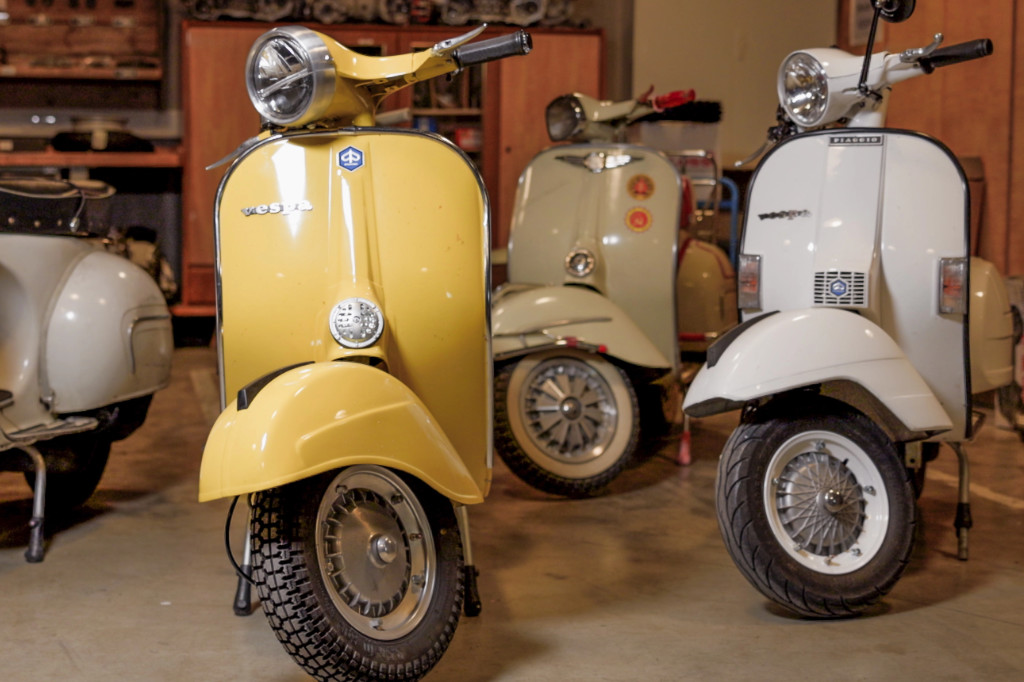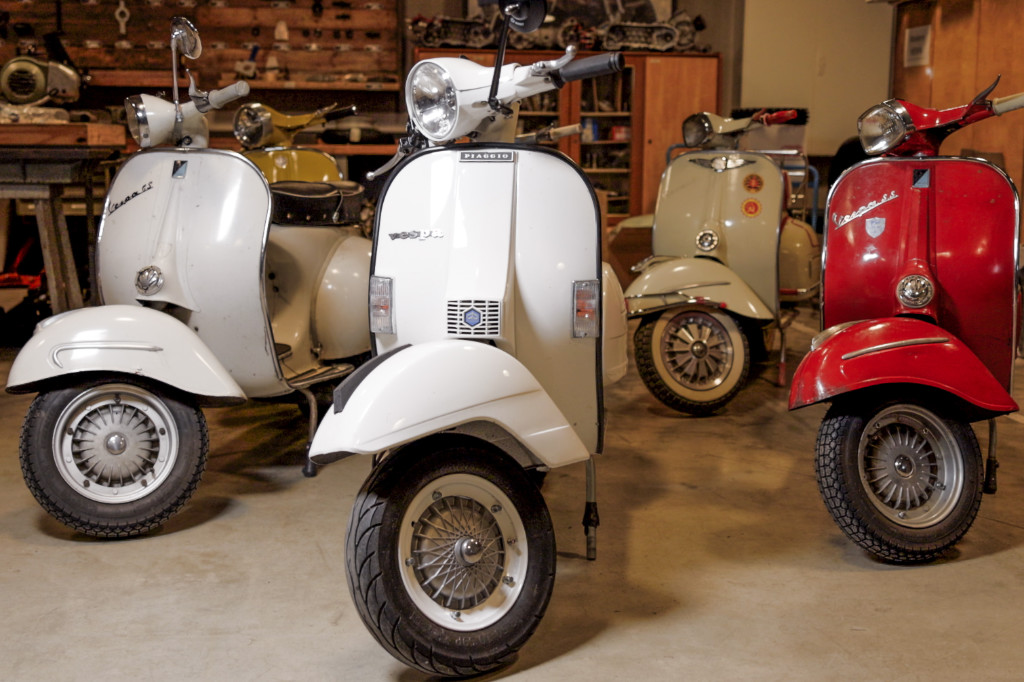Largeframe recognition features
With the Largeframe series Piaggio changes the engine concept. The engine block is now a single piece, the swingarm and frame are slimmer. The reason for this is the elimination of the carburetor flap. The rear of the Vespa is now two-piece. The engine design has been rethought compared to previous models. Whereas in the Wideframe the swingarm and engine were each one part, both are now bolted together. As a result, the model is more compact and stable. The kickstarter is now simplified. The engine offers more space for carburetor and cylinder.
Features of Largeframe
The largeframe has neither a carburetor nor a cutout for the right side hood. The leg shield is also slimmer: in general, the model is less wide.
Model: VNA
The pioneer of the large-frame models is the VNA. Its components were mainly taken from the wideframe class. These are the one-piece fender, the still wide leg shield and the lettering. On the tunnel area there were kick strips. The original equipment still included the swinging saddle including luggage rack. Other technical details of the VNA are worth mentioning. The mixture was still controlled by the piston. Later, a typical feature is the control of the intake by rotary slide. Another characteristic detail of the VNA is the split handlebar. At that time this was very advanced. Later one moved away from it again.
Model: Vespa VBB
On the VBB, the fender is in two parts. The treads now only ride on the running board. The Vespa now has a rotary vane engine. The rotary slide starter is typical attribute of the Vespa Largeframe throughout.

Model: Vespa GL
On the even faster GL, the frame should be stiffer and the geometry should be such that the scooter runs straighter. The cascade of the Vespa GL is wider and more angular, as are the side hoods. The steering head is characteristic of the Vespa GL, especially with the headlight in trapezoid shape. The angle of the steering head is completely changed on the Vespa GL; realigned and flatter is the angle at which the fork is positioned to the ground. This results in changes in caster and wheelbase with the effect that the Vespa GL rolls straighter. From the GL onwards, this becomes the trademark of the Vespa.
Model: Rally
At the beginning of the 70s comes with the Rally the crowning glory. At the beginning of the model series there was the model with 80 cc, later with 200 cc. So they were the fastest scooters to date. The engine or position of the cylinder was also slightly changed. It has a slight slant. On the side there is a clear distinctive feature of the model. Thus, the manifold protrudes crookedly behind the running board. The headlight of the Rally is also larger.
Model: Vespa PX
The Vespa PX was produced until 2016. In a model of the first series, the cascade is still somewhat rounder than in the successor model. The Vespa PX is retrofitted from 1998 with a disc brake, a decisive advantage in the braking process . This was much more effective. The clear glass headlight of the Vespa PX allows the driver for the first time a good view. However, 2016 is officially the end of the class Vespa Largeframe.
Models: Vespa GS 160 and Vespa SS 1180
The Vespa GS no longer fits into the Largeframe series. Namely, its engine has a piston control. At the front of the fork is installed for the first time a shock absorber. This is therefore not installed with the shock absorber. All this also applies to the successor model SS 1180. The carburetor sits here above the cylinder. The reason for this is the built-in piston control. The transmission compartment is more compact.
Models: T5 and Cosa
T5 stands for “Traversi Cinque”. For the first time, the engine here has five overflow channels. The mixture enters the cylinder via these. This is still the case with two-stroke engines. The T5 has a large speedometer with a digital tachometer.
On the Vespa Cosa, the hydraulic integral brake and the electronically controlled anti-lock braking system are special. On the engine case, it is noticeable that the swing head mount is wider than on the PK. The rear shock absorber is longer here. It is positioned and shaped differently for its mounting on the engine housing. With regard to the wheel brake cylinder mount, the rear brake anchor plate has been mounted differently. A special equipment feature is the tachometer.




I need a carburettor for a vespa Piaggio 90cc, or 125cc, do a nessary tor me,
thanks